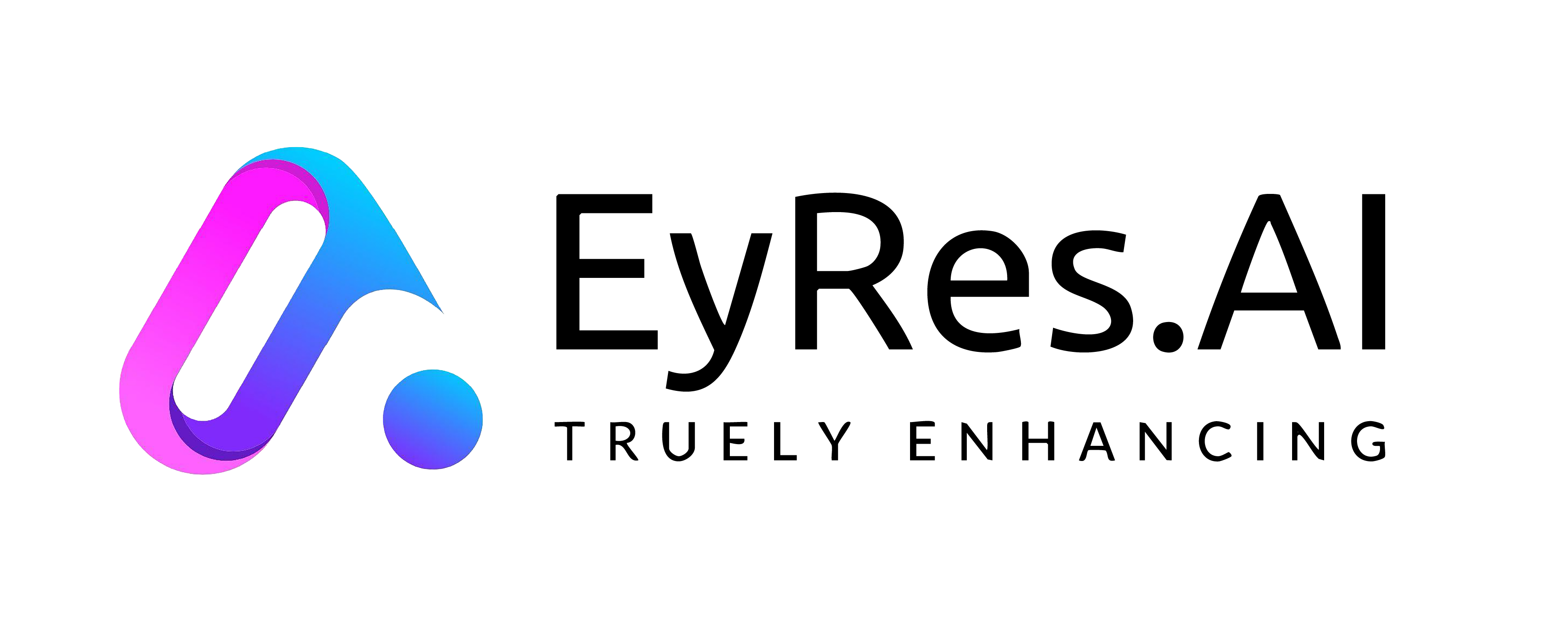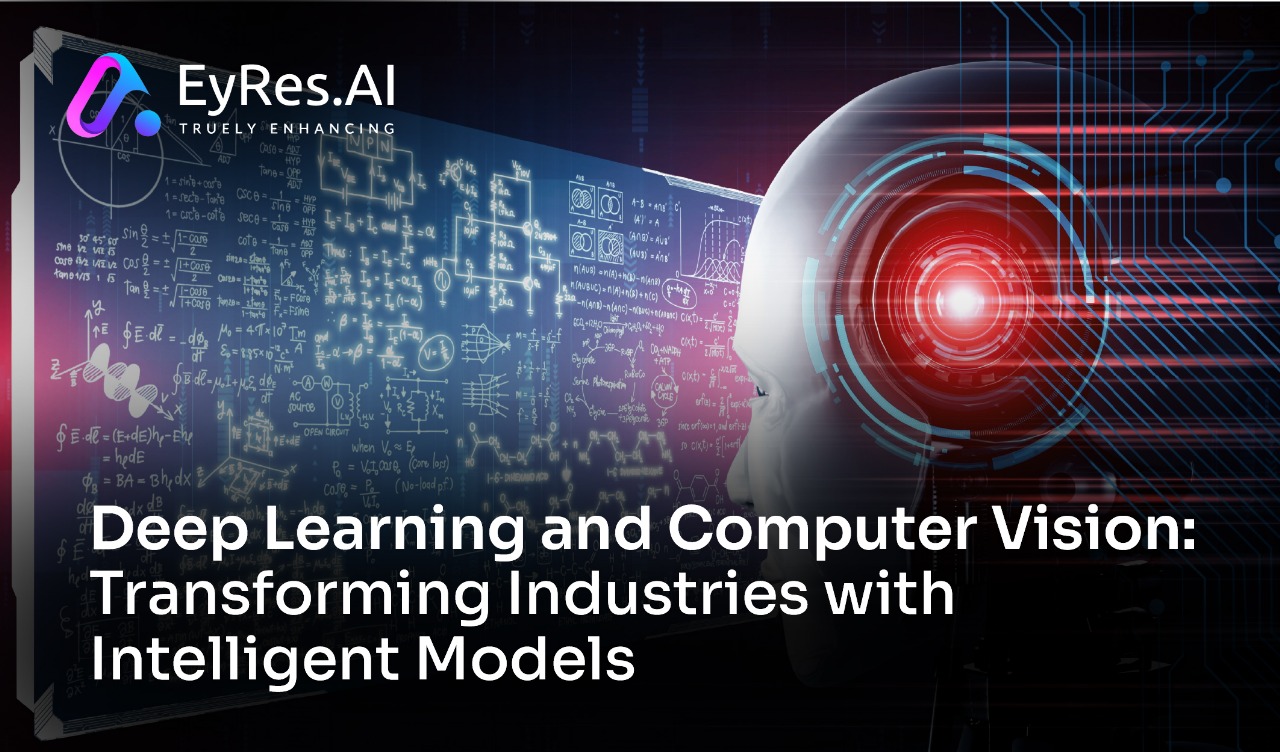What is Deep Learning? Deep learning is a subset of artificial intelligence (AI) that utilizes neural networks with multiple layers to process and analyze complex data. Unlike traditional machine learning models, deep learning models can self-learn and improve with minimal human intervention, making them ideal for industrial applications. Role of Computer Vision in Industry Computer vision empowers machines to interpret and analyze visual data from the real world. By leveraging deep learning techniques, industries can automate tasks that traditionally required manual inspection, such as defect detection, quality assessment, and predictive maintenance. Eyres AI Automated Quality Inspection One of the most impactful applications of deep learning and computer vision in manufacturing is automated quality inspection. Industries such as automotive, Metal, Rubber and electronics, use AI-driven models to identify defects in products with high precision and speed. Example: Deep learning-powered vision systems can detect minute cracks in automotive components, ensuring safety and compliance with industry standards. Benefit: Eliminates human error, reduces wastage, and enhances overall product quality. Predictive Maintenance Deep learning techniques enable industries to perform predictive maintenance by analyzing sensor data and identifying potential equipment failures before they occur. Example: AI models analyze vibration and temperature data from machinery to predict bearing failures in manufacturing plants. Benefit: Minimizes unexpected downtime, reduces maintenance costs, and extends equipment lifespan. Industrial Robotics and Automation Computer vision-integrated robots are transforming manufacturing floors by performing repetitive and high-precision tasks with maximum accuracy. Example: Robotic arms equipped with deep learning models can assemble intricate electronic components with zero defects. Benefit: Enhances production efficiency and reduces dependency on human labor. Supply Chain Optimization Deep learning-powered visual inspection systems streamline logistics by tracking inventory, identifying damaged goods, and automating warehouse operations. Example: AI-driven barcode scanning systems and automated sorting mechanisms improve packaging accuracy. Benefit: Reduces supply chain inefficiencies and improves customer satisfaction.
Convolutional Neural Networks (CNNs) CNNs are the backbone of image recognition and classification in industrial automation. These networks can detect intricate patterns in X-rays, infrared images, and microscopic scans. Generative Adversarial Networks (GANs) GANs are used to enhance image quality, simulate defects for training datasets, and generate synthetic data to improve model accuracy. Transfer Learning Industries can leverage pre-trained deep learning models to reduce training time and enhance model performance without requiring vast amounts of labeled data.
Understanding Deep Learning and Computer Vision
The Role of AI Models in Industrial Transformation As deep learning and computer vision continue to evolve, AI models are reshaping industrial workflows, enhancing automation, and improving decision-making in real-time. These intelligent models provide industries with the ability to analyze complex visual data, predict failures, and optimize efficiency across multiple sectors. How AI Models Drive Industrial Transformation Self-Learning Systems for Continuous Improvement Unlike traditional automation methods, deep learning models are designed to improve over time through self-learning mechanisms. By leveraging neural networks, industries can ensure that AI-driven inspection systems become more accurate and efficient with ongoing data training. Adaptive Intelligence for Changing Conditions AI-powered vision systems are not just programmed for fixed tasks—they adapt dynamically based on environmental variations. Whether it's detecting surface defects in different lighting conditions or identifying subtle changes in texture, deep learning models can adjust without manual recalibration. Real-Time Decision-Making with Edge AI Edge AI allows industries to process and analyze visual data in real-time without relying on cloud connectivity. This capability is particularly beneficial for applications such as predictive maintenance, where immediate insights are crucial in preventing downtime and ensuring seamless operations. AI-Driven Process Optimization for Maximum Efficiency AI models are revolutionizing industrial optimization by reducing inefficiencies in manufacturing, logistics, and inspection workflows. By integrating deep learning-based automation, industries can streamline production cycles, minimize waste, and maximize throughput. Future of AI in Smart Manufacturing As AI models become more sophisticated, industries are shifting toward smart manufacturing ecosystems where AI collaborates with human expertise. The fusion of deep learning and robotics is leading to unprecedented precision. EyresAIQC+ In the fast-paced world of industrial automation, efficiency, precision, and quality control are paramount. The integration of deep learning and computer vision is revolutionizing industries by enabling automated inspection, predictive maintenance, and intelligent decision-making. These cutting-edge technologies offer significant benefits to manufacturers, industrial owners, inspection process managers, and quality assurance heads who aim to enhance productivity and reduce operational costs.
Industrial Applications of Deep Learning and Computer Vision
- Real-Time Defect Detection: Future Trends in Deep Learning and Computer Vision for Industry
- Time Management: Edge AI for Real-Time Processing
- Versatility: Edge computing enables on-site AI processing, reducing latency and enhancing real-time decision-making for quality inspection and defect detection.
- Accurate Defect Classification: AI-Powered Digital Twins
- Data-Driven Accuracy: Digital twins leverage deep learning to create virtual replicas of industrial machinery for performance monitoring and failure prediction.
- Real-Time Decision Making: The fusion of deep learning and computer vision is revolutionizing industrial automation, enhancing efficiency, and ensuring flawless quality control. As industries embrace AI-powered solutions, they gain a competitive edge by reducing costs, increasing productivity, and optimizing operational processes.
- Pre-Tested AI Model: For manufacturers, quality heads, and industrial leaders, the time to invest in deep learning-driven automation is now. With the right AI strategy, businesses can future-proof their operations and achieve unparalleled precision and efficiency.
Conclusion: Implementing Deep Learning and Computer Vision in Your Industry
Define Business Objectives Identify key pain points in your manufacturing or inspection processes that can benefit from AI-driven automation. Choose the Right AI Solution Select deep learning models and computer vision frameworks tailored to your industry needs. Leading platforms include TensorFlow, PyTorch, OpenCV, and Nvidia DeepStream. Data Collection and Training Gather high-quality labeled datasets to train deep learning models for defect detection, predictive maintenance, and process optimization. Integration with Existing Systems Seamlessly integrate AI-powered inspection and monitoring systems into your production workflow for real-time analysis and decision-making. Continuous Improvement Regularly update and refine deep learning models to improve accuracy and adapt to changing industry requirements. EyresAIQC+,

